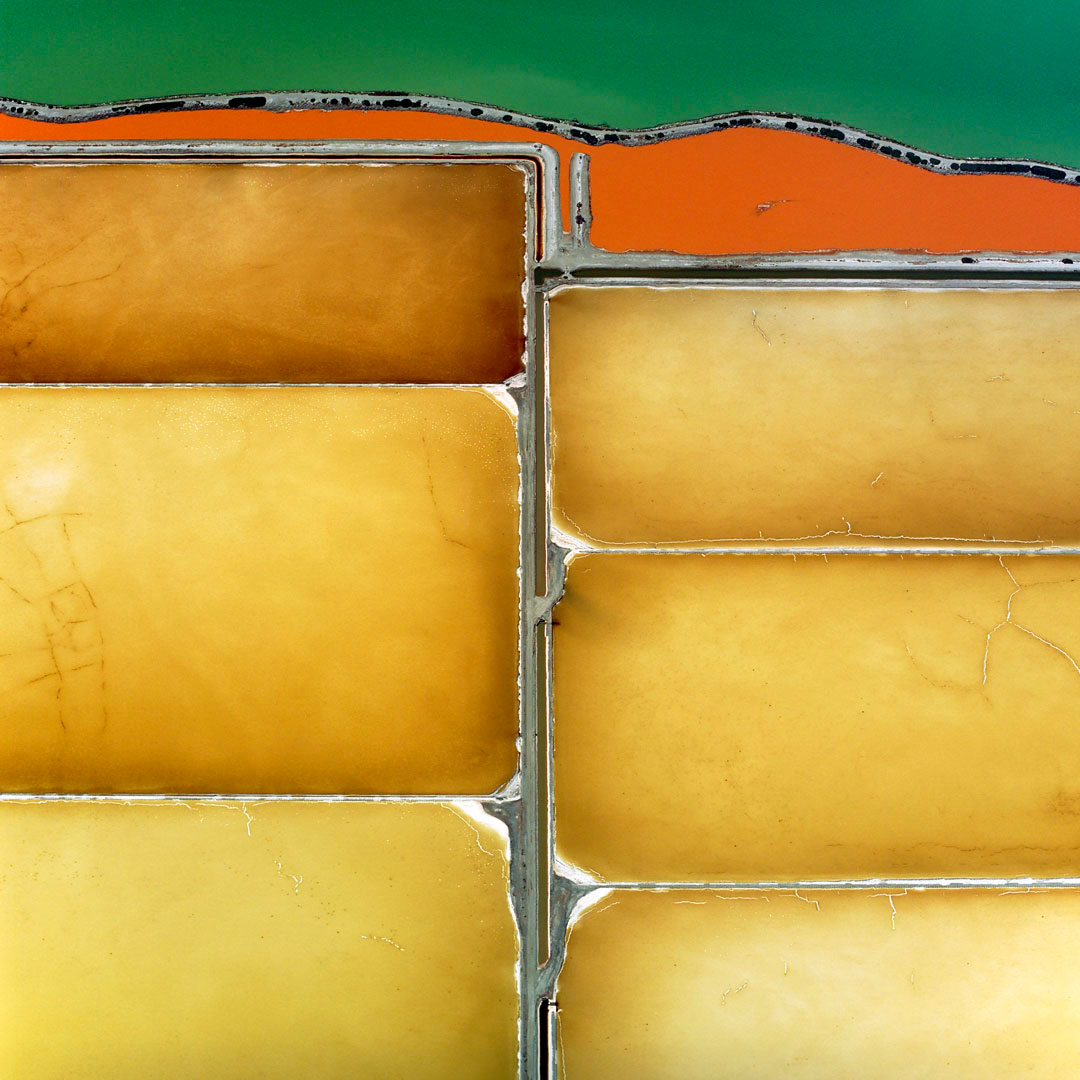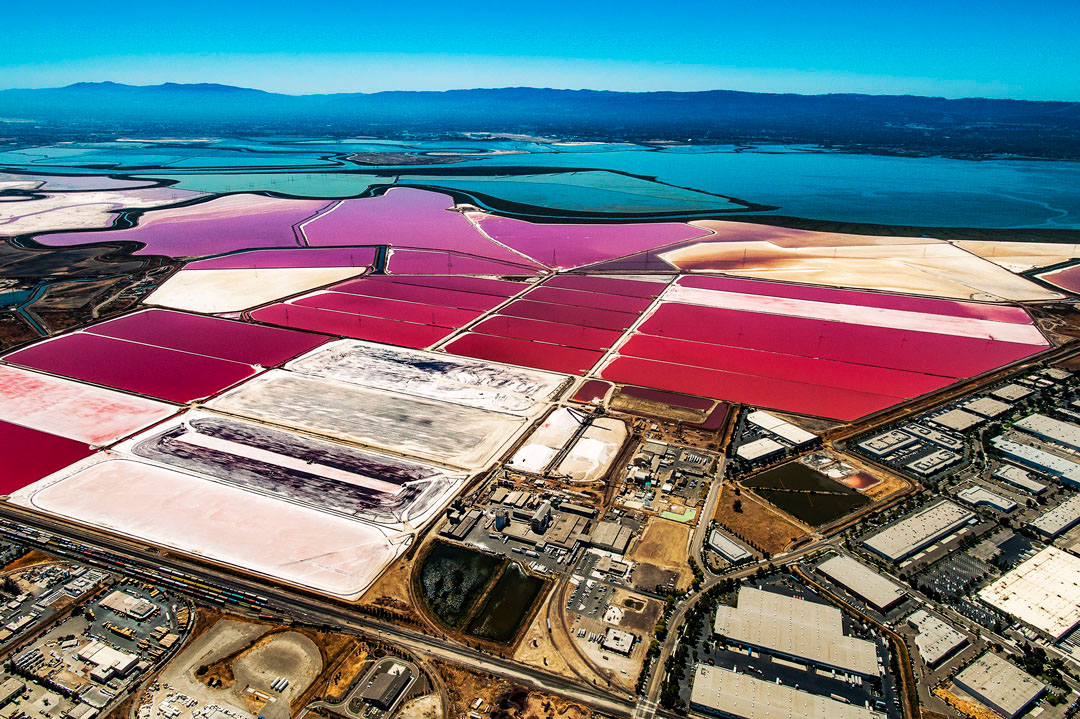Art from Salt

The Cargill Salt Ponds are located in San Francisco Bay in the cities of Newark, Redwood City and Napa. The Napa and Redwood City operations have been closed, and production is now in Newark only. Anyone who has looked out the window of an airliner approaching San Francisco International Airport on a clear day has seen this multi-colored palette of evaporator and crystalizer Ponds in the South Bay. This is where Morton and other brands’ table salt is produced in addition to salt for agricultural and other industrial uses.

I first noticed these ponds when I was learning to fly in the mid 1960s. The geometric patterns provided good reference points for practicing certain required aerial maneuvers. Several years later, when I was studying photography at San Francisco State College, I began photographing the ponds. I was fascinated by the combination of the abstract and the real – it was Diebencorn with a drawbridge, Thiebaud with a transmission tower or Pollock with a power line.

Over the years, I spent many hours turning circles over the area and now have a large portfolio of salt pond images. The area is constantly changing, with the seasons, with the weather, and with the age of the ponds. Each time I visit the area, I discover something new.
The palette of colors that makes the salt ponds so beautiful is created by a complex ecosystem. The colors range from pale green through deep coral pink to bright red. The color indicates the salinity of the ponds. Micro-organisms change their hues as the salinity of the pond increases. In low to mid-salinity ponds, green algae is predominant, giving the water its deep greenish cast. As the salinity continues to build up, an algae called Dunaliella shifts the color to a lighter shade of green. In middle to high salinity ponds, the Dunaliella produces a red pigment. Millions of tiny brine shrimp lend an orange cast to the water in mid-salinity ponds. Salt loving bacteria such as Stichococcus also contribute red tints to high salinity brine.

Water is drawn out of the ponds through natural evaporation, and during the five years it takes for the bay water to mature into salt brine, it is moved from one evaporation pond to another. In the final stages, when the brine is fully saturated, it is pumped to the crystalizer ponds where a bed of salt 5 to 8 inches thick is ready for harvest.
These ponds and the marshes that surround them are important habitat for more than 70 species of birds, including several endangered species. In 2005, federal and state agencies acquired 16,500 acres of Cargills’s bay lands for wildlife habitat.
Cargill continues to harvest salt on 9,000 acres within the ” Don Edwards San Francisco Bay National Wildlife Refuge” while marsh restoration and habitat enhancement plans are being realized on approximately 40,000 acres in the north and south bay.


See the South Bay Salt Pond Restoration Project website for more information.

Following high school years devoted to art, photography and skiing, (not necessarily in that order), Campbell enrolled at the University of Oregon, but dropped out after his freshman year to learn how to fly. In little more than a year, he earned his Commercial, Multi-engine and Instrument Pilot Certificates and began flying charter flights for an air taxi company in Oakland. In the mid ’90s, because of his DC-3 experience in the ’70s, he was hired as a Captain to fly the Otis Spunkmeyer DC-3s on Air Tours over the San Francisco Bay Area, and on a nationwide tour on the Airshow Circuit in 1997. He always carried his Leica camera on these flights, and since he was the Captain, he could take the plane where he wanted to. Now based in Forestville, California, Robert Campbell Photography serves the aerial still photography needs of a variety of clients and he sells prints of his extensive collection of photos directly and through photo reps and galleries. You can reach him at gbaerial@icloud.com.

Leave a Reply